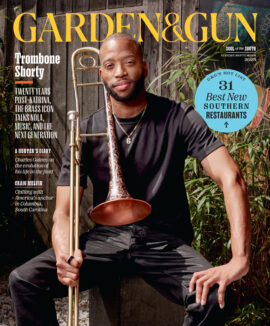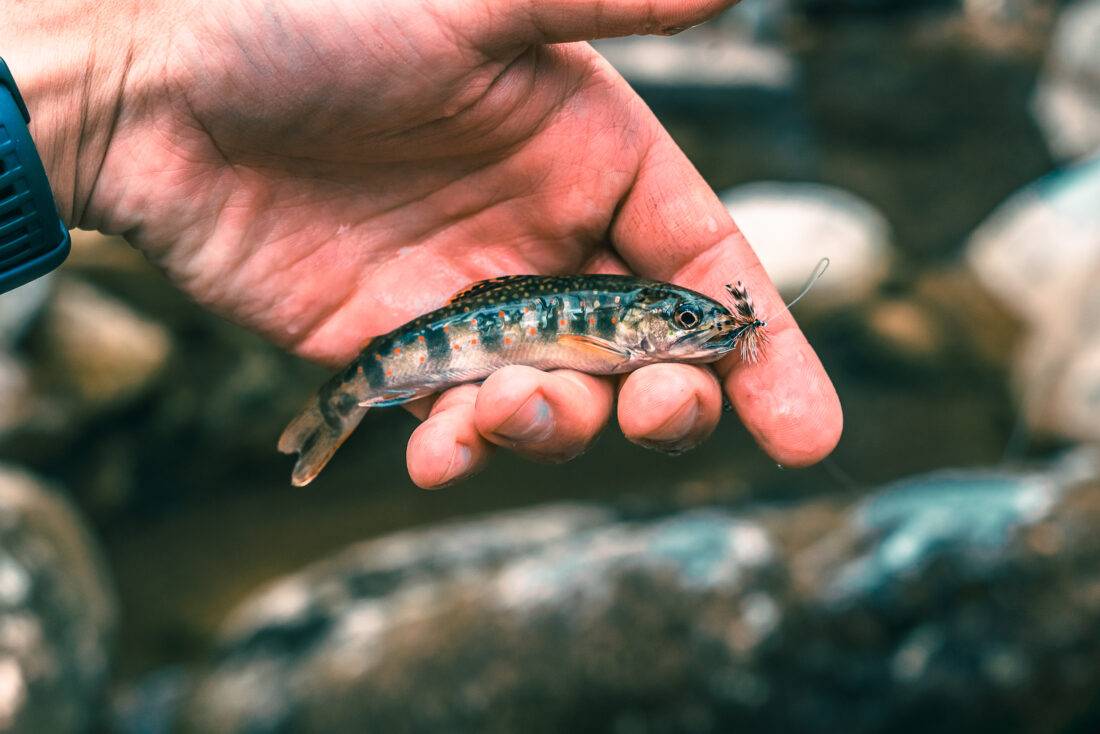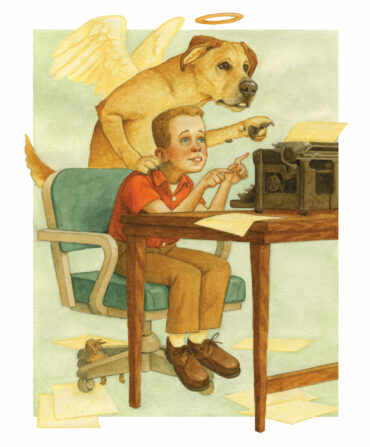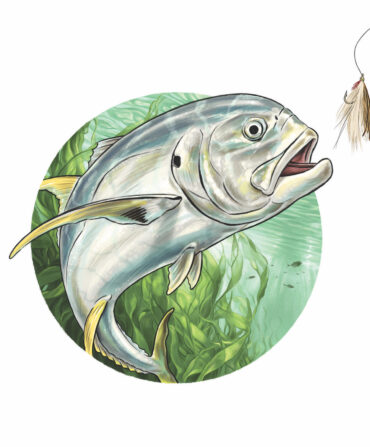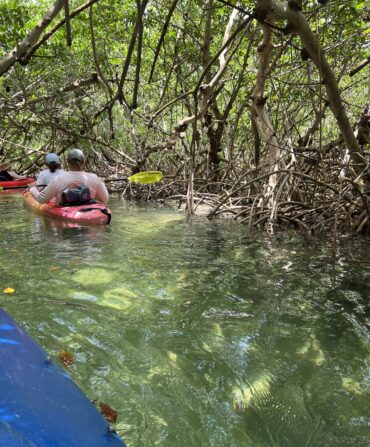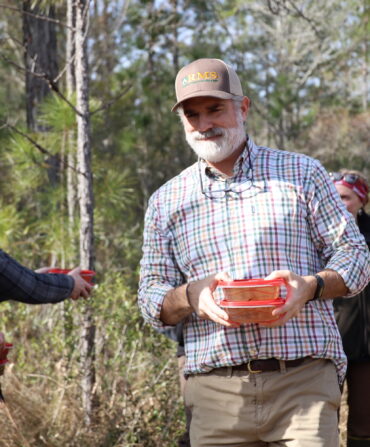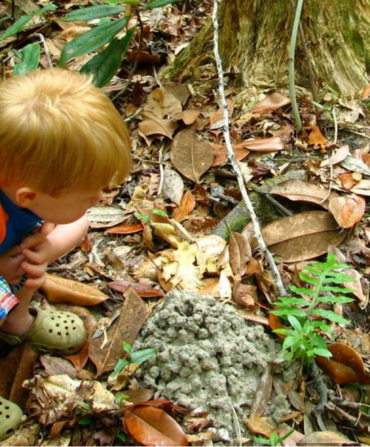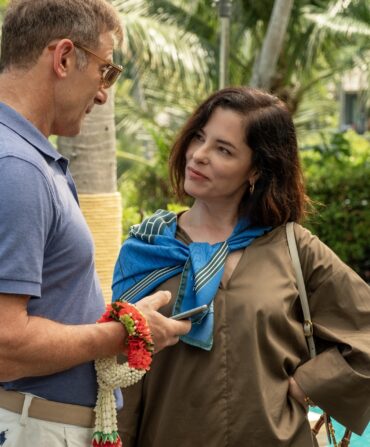You know the scene: You rise in the dark, drive to your spot, and pull off the dirt road just as first light filters through the treetops. And there in the half-light, your nightmare: another truck. Somebody beat you to the trout stream. You knew you shouldn’t have taken the time for that second honey bun.

Now you’re faced with one of trout fishing’s many ethical conundrums: Do you pull out and find another creek? Do you power hike for an hour to try to get above the early bird? Do you assume the angler headed upstream, so you give it a go downstream?
As the old saying goes (sort of), they’re not making any more trout streams. But they sure are making more trout anglers, and crowded streams make it even more important to play nice. To walk through the finer points of trout stream etiquette, I turned to Dustin Coffey, whom I’ve fished with for a decade. Coffey is the fly-fishing manager and head guide at Chetola Resort in Blowing Rock, North Carolina, and grew up near the state’s famed Pisgah National Forest trout streams. He’s also the 2024 Orvis-Endorsed Fly-Fishing Guide of the Year, so he knows a thing or three about doing the right thing on the water.
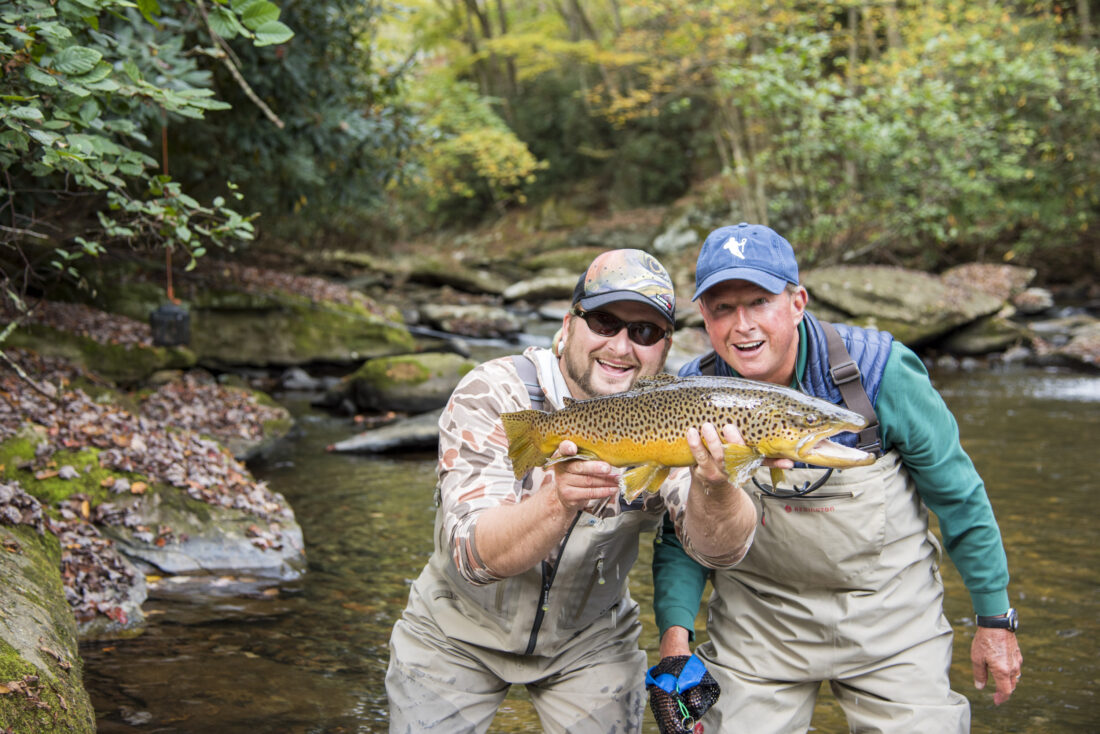
Move or Stay?
“You see that truck or you see a wet bootprint on a rock,” Coffey says, “and you think: Dadgummit, what now?” On small, less populated streams, if he has a solid Plan B stream in mind, he keeps driving. Otherwise, it’s time to be Mr. Nice Guy. Coffey suggests avoiding the temptation to power-hike upstream and try to get ahead of the angler, which is my standard move. “The next thing you know, you’re eating your lunch on a rock and here they come,” he says. “That ruins the day for everybody.”
Instead, he tries to find the other angler. “I walk the stream and try to have a conversation.” The angler might be there for an all-day-trip, in which case, first-come, first-served. But he might just be out for a couple of hours, and you could agree on a spot upstream where you could start. “Just be nice,” Coffey says. “If you come up to the person and you’ve got a little gravel in your grits, that’s no good. Treat them like Andy Griffith would, and you might even learn something. Or make a new fishing friend.”
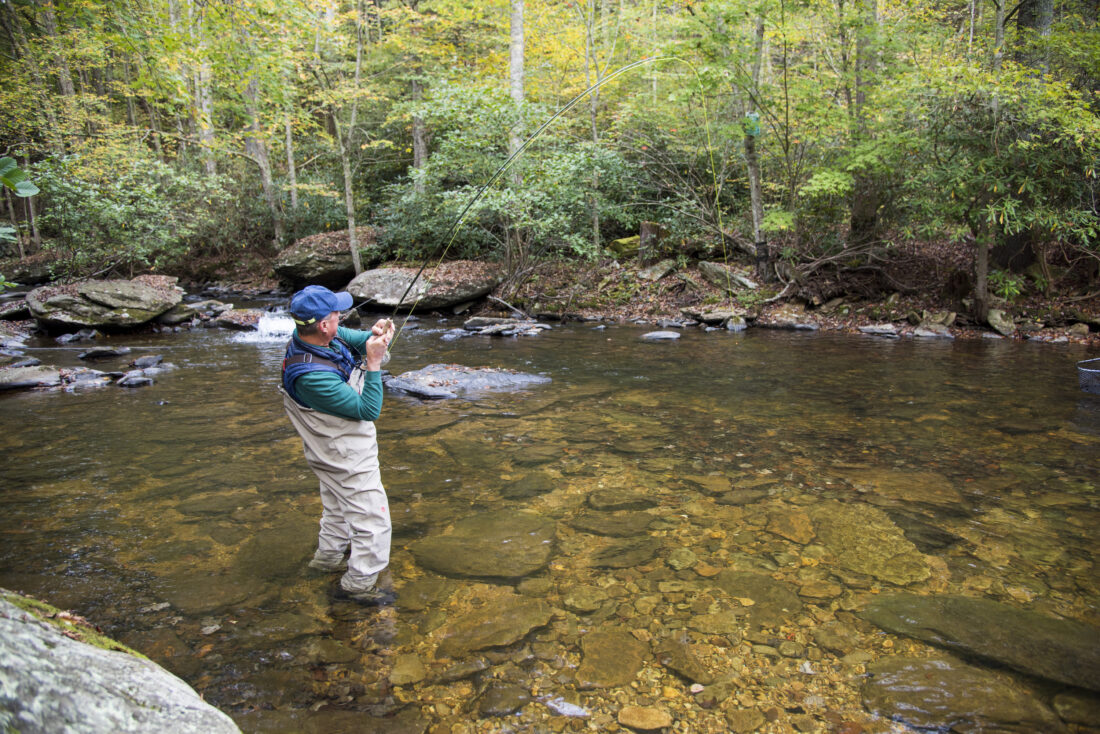
Your other option is to fish behind the early bird, which may not be ideal but doesn’t mean your outing is wrecked. “I’m not scared to fish behind somebody,” Coffey says. “You just have to change your tactics.” If you’re coming in behind another angler, slow down and focus. “Ninety percent of the trout are caught by ten percent of the anglers, and it comes down to attention to detail. You need to do something different than the person in front of you.”
Most people are right-handed, he says, and will typically move up the left-hand side of a creek (while facing upstream) for the easiest casting. That’s why you should try the other side of the creek. And don’t exit the water when the going gets tough. Approach the stream from the path of most resistance, Coffey says. Take the time to work overhanging brush and hard-to-reach water. That’s where the undisturbed fish will be.
Of course, you might have avoided all this by following Coffey’s first rule of trout fishing. “Get up,” he says. “Everything in life is better when you start early—whether it’s stocks, church, or fishing.”
Give Them Space
If you’re fishing a larger, popular public stream, sharing a stretch of trout water is more of an accepted practice, and local traditions can govern how closely together anglers typically fish. If you’re new to the area, it’s a good idea to take a few minutes to observe how folks are navigating one another. But no matter how they do it, a few etiquette guidelines apply everywhere.
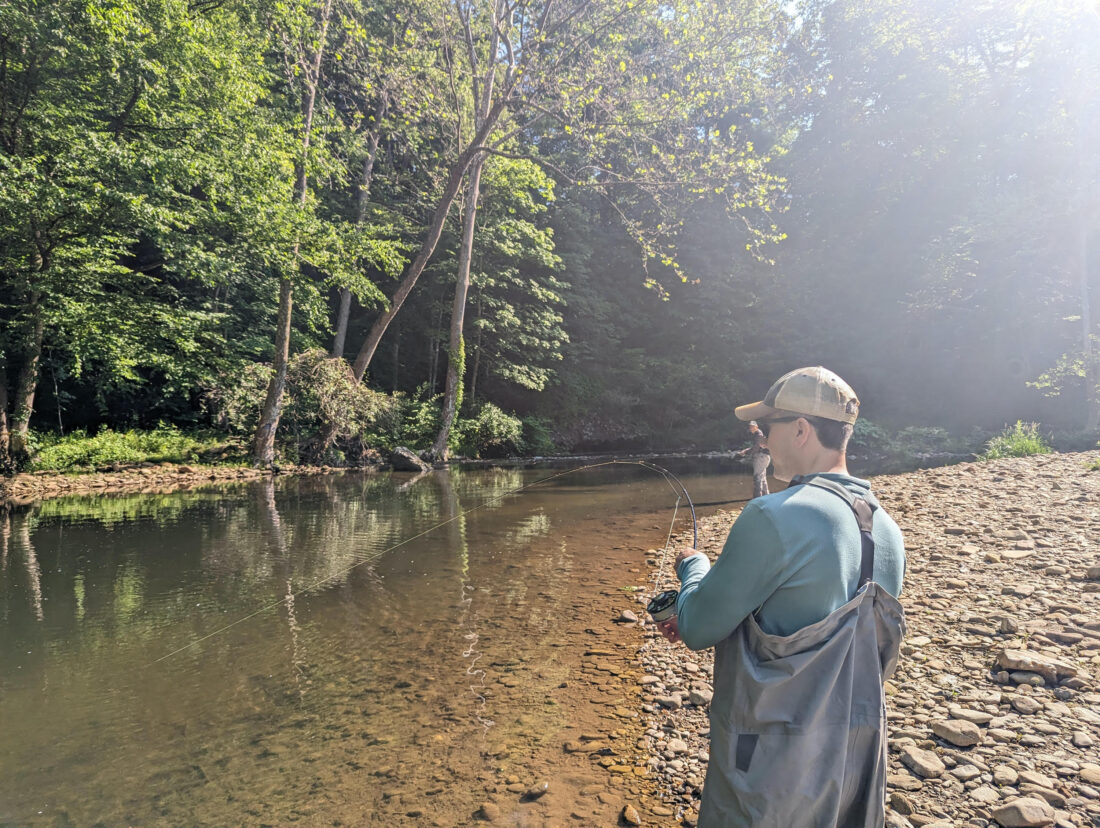
A flyline is typically ninety feet long, Coffey says. Even if you can only cast fifty feet, that doesn’t mean someone else can’t rocket the whole line out there, so make sure you stay out of range. “Some people can bomb it,” he says with a laugh. “Don’t put your limitations on anyone else.”
On rivers where you might move up and down the bank, high-holing and low-holing are the cardinal sins. These terms describe the practice of setting up on the next good hole or run either upstream or downstream from another angler. “Give someone at least two good holes or runs before moving to the water,” Coffey suggests. And don’t forget: Whatever you do unto them is most likely what they will do unto you when it’s their turn to move.
Walk Softly During the Spawn
Trout fishing during the spawning season is a difficult issue. Rainbow trout spawn in the spring, and brown and brook trout spawn in the fall. Each is a tempting time to be on the water. But in small streams where wild trout live, Coffey says, it takes very little disturbance to the stream bottom to send a silt plume over trout eggs, depriving them of oxygen. He closes his private water stretches during the peak of the spawn. “These streams are precious,” he explains. “Wild trout are a finite resource. Catch a fish and it’s dumping eggs, and that’s your next generation going to waste.”
If you do find yourself on a trout stream during a spawning period, watch for the gravelly bottoms where trout spawn and try to avoid them. And walk carefully to reduce the amount of silt and muck you stir up from the stream bottom. “You wouldn’t believe how little silt it takes to smother trout eggs,” Coffey says. If you come across a redd—the shallow depressions in gravel where female trout lay their eggs—Coffey suggests you put your fishing rod down and count yourself lucky.
“A wild trout on a redd is such a cool thing to see,” he says. “This is the time to realize that you are a foreigner in a beautiful, finite environment. Your impact will make a real difference on the future of these fish.”
Follow T. Edward Nickens on Instagram @enickens and find more Wild South columns here.
Listen to The Wild South, G&G’s new podcast hosted by David DiBenedetto and T. Edward Nickens and featuring conversations with sportsmen and sportswomen in the South and beyond.

